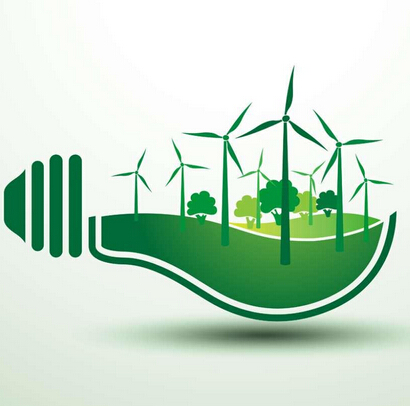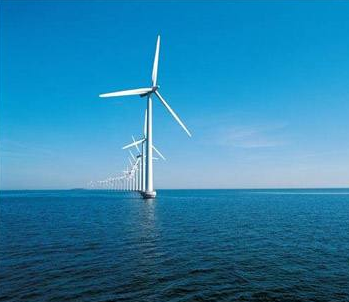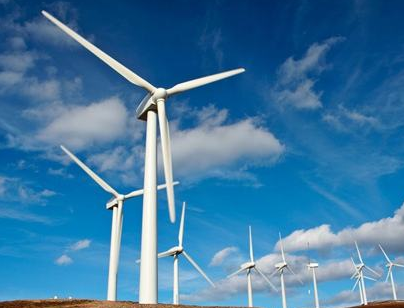Different from the fiery heat of photovoltaic power generation, in recent years, the construction speed of wind power in China has been declining. In 2017, the newly installed capacity of wind power has hit a new low of nearly five years. At the same time, China's offshore wind power has sprung up, and the installed capacity has grown rapidly for five consecutive years, ranking third in the world.
China's offshore wind power started late and developed rapidly, but it faced fierce competition from other new energy sources such as onshore wind power and photovoltaic power generation. At the recent 2018 Offshore Wind Power Leaders Summit, experts at the meeting said that in the next phase of China's offshore wind power development, technological innovation and large-scale development must be adopted to get rid of subsidy dependence as soon as possible and accelerate the development of the industry through market-based methods.
The offshore wind power market is difficult to estimate
In 2007, in the Bohai Bay, China's first offshore wind power test prototype was set high. In the same year, China's first offshore wind power demonstration project - Shanghai Donghai Bridge 100,000 kilowatts wind farm was unveiled. After 11 years of development, by the end of 2017, the cumulative installed capacity of offshore wind power in China has reached 2.79 million kilowatts, and offshore wind farms have achieved more flowering. If you walk along the coastlines of Jiangsu, Fujian, Guangdong and other provinces, you can see white wind turbines. Huge figure.
As we all know, in recent years, a major constraint to the development of China's new energy is the difficulty of consumption. Unlike onshore wind power in the “Three North” region, offshore wind power is very promising due to its close proximity to China's power load center. Data show that electricity consumption in the 11 coastal provinces last year accounted for 53% of the total electricity consumption, and maintained a good compound growth. “At the same time, under the pressure of huge energy structure adjustment, the demand for clean energy in these provinces is very large in the future,” said Su Xinyi, director of the New Energy Planning Department of the Electric Power Planning and Design Institute
In addition, offshore wind power is more friendly to the power grid. On the one hand, offshore wind power does not occupy land resources; on the other hand, it is 20% to 70% higher than the onshore wind power utilization hours in the same geographical position, and the output process is even more smooth.In fact, China has the natural advantage of developing offshore wind power. The coastline is 18,000 kilometers long, and the sea area can be more than 3 million square kilometers. The wind energy resources are abundant. According to the preliminary results of the detailed investigation of wind energy resources of the China Meteorological Administration, the installed capacity of wind power is about 200 million kWh in the offshore area of China's 5 to 25 meters water depth line and 50 meters above sea level.
China's "Thirteenth Five-Year Plan for Wind Power Development" proposes that by 2020, the installed capacity of offshore wind power will reach 5 million kilowatts. According to Bloomberg New Energy Finance, the cumulative installed capacity of offshore wind power in China can reach 8 million kilowatts by 2020, and the annual new capacity will reach 2 to 3 million kilowatts by 2020-2030.
"The size of the ocean is unimaginable. The market space for offshore wind power is difficult to estimate." Li Junfeng, former director of the National Center for Climate Change Strategy Research and International Cooperation, said frankly.

Large-scale development conditions
After years of steady development, whether it is in the amount of resources that can be developed, or in terms of technology and policy, China's offshore wind power has basically met the conditions for large-scale development.
Whether it is to promote technology maturity or to accelerate cost reduction, it must be ensured that there is sufficient development scale. The reporter learned that Fujian Province plans to install more than 2 million kilowatts of offshore wind power by the end of 2020. Guangdong Province has planned 23 offshore wind farm sites in the province with a total installed capacity of 66.85 million kilowatts. In Jiangsu, it plans to build a total of 3.5 million kilowatts of offshore wind power projects by 2020.
"In fact, offshore wind power is also facing the problem of consumption." Su Xinyi believes that on the one hand, the coastal areas are economically developed, the power grid is dense, and the corridors are relatively tight. In the future, the transmission channels of offshore wind power should be planned in advance; The utilization rate of substation equipment in coastal areas is relatively high, and there are restrictions on wind power access. "We judge that offshore wind power may face consumption problems if it develops to more than 10 million kilowatts in a province."
From the policy point of view, at present, China's offshore wind power subsidy intensity is still high, facing the pressure of large subsidies to retreat. The reporter was informed that the current average subsidy intensity of offshore wind power is about three times that of onshore wind power, and the electricity price has not been adjusted for four years. As an important measure of offshore wind power development, the cost will undoubtedly determine the market trend.
Actively respond to electricity prices
After the cautious exploration of the "Twelfth Five-Year Plan", the "Thirteenth Five-Year Plan" is considered to be a crucial period for the offshore wind power to inherit the past and the future. On May 18, the National Energy Administration issued the Notice on the Relevant Requirements for Wind Power Construction Management in 2018. From 2019, the newly approved centralized onshore wind power projects and offshore wind power projects in all provinces (autonomous regions and municipalities directly under the Central Government) should be approved. Competitive mode configuration and determination of feed-in tariffs. The breakage of the electricity price “iron rice bowl” has brought new challenges to the offshore wind power industry.
It is estimated that the current cost of tax-included offshore wind power is not less than 0.84 yuan / kWh. This means that the current tariff of 0.85 yuan / kWh of offshore wind power projects, including tax on-grid tariffs, can only provide basic income to development companies. If the price of electricity continues to drop after bidding, companies must plan strategies in advance.
It is predicted that when a market is installed to 3 to 4 million kWh, switching from emerging markets to mature markets can be achieved. It is expected that China will achieve this goal between 2018 and 2019, and the cost of offshore wind power will drop rapidly.
















 RCCN WeChat QrCode
RCCN WeChat QrCode Mobile WebSite
Mobile WebSite







